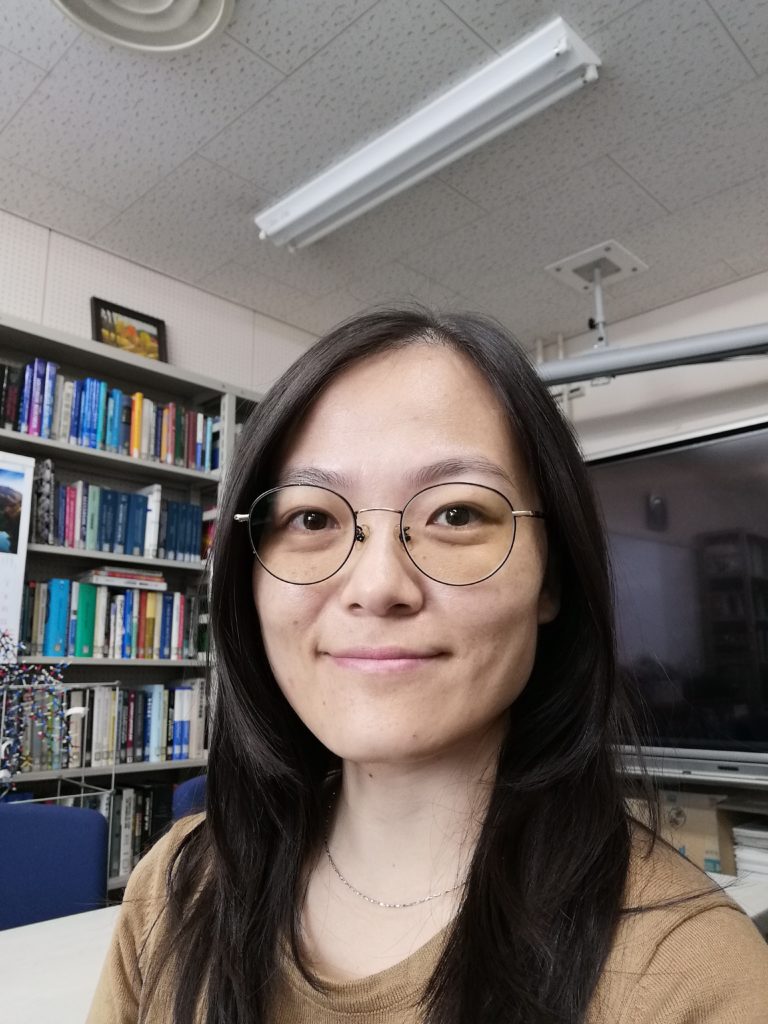
Dr. Jingjing Lin is an assistant professor at Toyohashi University of Technology. She received a Bachelor’s degree of Public Administration at Harbin Engineering University and a Master’s degree in Information Technology at The University of Hong Kong. She has also completed postdoctoral work in entrepreneurship studies and has written several scholarly papers on e-learning. Dr. Lin has a YouTube Channel where she uploads educational content related to research methodology and e-learning.
Kristoffer Balintona: Your doctoral thesis is about e-learning. Do you mind explaining what e-learning is and how it relates to Massive Open Online Courses (MOOCs)?
Dr. Jingjing Lin: E-learning is short for electronic learning. You may not have heard of it but you are doing it every day. You can, for instance, browse my YouTube channel or find a video online and learn from it. E-learning actually went through several phases in its history. At the beginning, you might use a PC CD-ROM to deliver educational materials to students in front of a TV and read the CD-ROM from the computer. That’s one early type of e-learning. And then the internet started, then most of the learning started moving online. And that’s a new version of e-learning. It’s any learning that takes place with the help of electronic devices or the internet. The most trendy part of e-learning now is digitized learning resources such as research talks or courses online on platforms like edX, Udacity, and Coursera which are open to audiences like us. These are just platforms that host Massive Open Online Courses.
Has 2020 taught you anything new about e-learning?
We are definitely not prepared. But that’s one thing that even a person without the knowledge of e-learning will know. In COVID-19 situations, you see a lot of teachers simply starting Zoom meetings with students and sharing PowerPoints. Is this e-learning organized enough? Is it being evaluated under a systematic strategy of e-learning? No, I don’t think so. Most of us now are very much uninformed about how to do e-learning practices in different educational settings. COVID-19 is forcing us to suddenly look at e-learning as a single, large case-study. It’s like a fire took place in your house. Suddenly you realize that your house is not equipped with the water hose or even emergency exit. Not even with a fire extinguisher. This is just a metaphor to show that we are not prepared for e-learning at such a large scale. Nevertheless, things didn’t change much from COVID-19, it’s just a different media. We simply treat online learning as another version of face-to-face classrooms, which isn’t the case.
Your work on the Youth Entrepreneur Education Review looks at entrepreneurship research at the high school level across the last three decades. Why do you think this work is important?
When I was doing my postdoctoral I learned that Japanese society but also other societies, governments, and organizations nowadays are very keen to promote entrepreneurship in the high school and middle school levels to try to push this intervention into the stages before the university education level. This is because many students at the high school and middle school levels, for instance, don’t actually continue to universities, if you look at different education systems in the world. They finish high school and they go to work. There is already research saying that early intervention to insert entrepreneurship education at an early age, like high school, when their career options or career intentions are still open, is much more effective than giving this intervention during higher educational levels since your subject of study will likely already be fixed by that point.
By 2030 there will be 1.9 billion people who turn 15 years old, the early stage of maturation. Half of them will reside in Asia and one quarter of them will reside in Africa. That’s a huge population. We are dealing with the biggest number of youth in humankind’s history now. So it’s a big population group we need to pay attention to because they are the future talent—future human capital in this society. Their well being will influence the health of society for sure. So to give them such intervention will help them to increase their awareness of entrepreneurship in this very different world from their parents’ generation or their grandparents’ generation.
I want to start talking about your experience with research methodology. Firstly, what is a research methodology?
A research methodology is a whole system of methods or approaches that you can follow to start doing your research or finish a research project. They are the tools you use to conduct your research.
Why do you think it is important to study research methodologies? What are they useful for?
My interest in research methodology only started after I arrived in Kyoto University. I had the interest to learn different methods before but not seriously until now. When I was doing my PhD I struggled with the research methodology and was not well informed about it. That kind of situation happens in many schools nowadays in the world. Not having the tools for learning hinders the development of young scholars. If you only have one tool, let’s say if you only have a hammer in your hand, you will only use a hammer for everything, no matter what your question it is. If you have a whole box of tools you will be able to select the best combination to answer your questions. If you know enough approaches and tools for studying and learning you can select the one that is most appropriate to the need of research questions. And that’s the purpose and the significant importance of studying research methodology. You need to become knowledgeable about different tools and become aware of different choices.
You recently started using the Zettelkasten Method (a note-taking and writing system that facilitates creative thought and productivity) which has gained a lot of popularity recently as a knowledge-management system. How did you learn about it and what did you discover from implementing it into your academic workflow?
I didn’t know about the Zettelkasten System until I read Sonke Ahrens’s book, How to Take Smart Notes. It’s quite important for researchers, no matter what subject you are studying, to take smart notes. You need to reflect on your learning, reading, and writing. This is how I got interested in the Zettelkasten approach. I used the Joplin application for two months as my first app for trying Zettelkasten. It was quite interesting. It helped me shape the basic structure of my Zettelkasten System. I took about 120 notes to play with it. But I ended up looking for a more stable app and since I was already using Evernote I decided to switch everything, including Zettelkasten, to Evernote. Interestingly, when I was transferring all the notes to Evernote from Joplin, I actually totally restructured their contents. That process was very, very painful because you are forced to reevaluate the contents you generated, some of which you might feel that content is not as valuable as it was for you before. The Zettelkasten System is a system that allows you to reflect on what you generate and what the external environment has given to you. So you don’t just copy-and-paste contents from the outside – you reflect on what you receive. That makes your notes have their own tone and be very personalized. Sonke Ahrens, in his book, gives some suggestions for using the system as a tool. What matters is how we use our tools. You have to write notes, you have to start writing papers, and you have to keep it a habit because a tool can only enhance your efficiency and effectiveness if you keep it as a habit. Zettelkasten is like exercising: you have to do it daily or regularly every week and then maybe after two or three months you will see the results of it.
What has been your experience with using Zettelkasten to write research papers?
I actually learned something very interesting when using it. As a researcher you need to produce writing. I was a postdoctoral when I started using Zettelkasten and I had to produce a research article very fast for a conference. Back then I was only with, let’s say, 120 notes. It was not quite enough to let me do a research article. So I thought to myself: what’s the fastest way to publish in this conference? Well, maybe synthesizing some previous research as a systematic literature review. So I decided on a topic and then very intensely looked for information related to this topic and then I submitted the article. I just quickly read things. I kind of put all the puzzle pieces together in a fast prototype way because it was only for the conference, right? You have prototype research and then you go to the conference, you collect feedback, and you polish the conference paper into an article and finally it can be published in a research journal.
Zettelkasten is very different. When you use Zettelkasten you have to do it every day in order to accumulate notes so that they are rich resources to support your future writing. But for the other, faster way, you actually don’t digest each article well. The point of Zettelkasten is to digest each thing you read well so you don’t need to go back to look at it again. And this increases your efficiency over time. What I did for that conference paper was so fast. It’s almost like going to McDonald’s. Doing research this way brings you only to the surface of the phenomena you want to understand. It’s not enriched enough.
This is the aspect that makes Zettelkasten so valuable. When you need to write a longer article you can directly use your notes without the problem of quoting because these are already in your own words. You can just reassemble them into longer writing outputs. So that fact was quite intriguing for me because when you are writing a long essay or article, you often feel like your brain goes blank. The effort of filling in 20 or 30 pages or even 100 pages is scary. But if you already have short notes in an organized system you can directly use those as a starting point. It’s like your personal garden of knowledge. You can just cherry pick notes that you need for the buckets you need to fill.
Do you think Zettelkasten should be implemented in education levels below university?
I’m currently doing research on entrepreneurship education for high school students. Again, it’s better to start early to put this kind of intervention earlier to help shape the way they interact with knowledge in a smarter way. Sonke Ahrens said himself that it is better to start early. But Zettelkasten was a very personal practice of Nicholas Luhmann, its inventor. The curve you have to climb to understand it is very steep. And that can scare many people. So I don’t know if it will fit everybody’s needs, in higher education or high school education. Luhmann passed away but all his work is currently being analyzed by this big research project. I will say that even in higher education, it’s not quite understood yet. It’s still in its research phase so we can’t be sure yet.
Is Zettelkasten viable outside of an academic space? Do you find yourself using it outside of academics?
I learned from Sonke Ahrens’s book that Zettelkasten was tailored mainly for academic writing and publishing. So how can it be used for other purposes? That’s an interesting point: can Zettelkasten fit to all learning needs? I didn’t explore enough to answer this question but, so far, outside of academics, I’ve only tried to use it with my Japanese study. I didn’t use it for very long this way though. It wasn’t effective for me. But I think every tool can serve different purposes and it depends on the user’s creativity. You can use chopsticks to eat food or you can use chopsticks to build a wooden toy castle. It depends on the creativity of the user. It’s possible if there’s a language fan who wants to experiment with Zettelkasten and in language acquisition. It’s totally possible because Zettelkasten is a very dynamic, flexible system and note-taking tool. I think knowledge is like water and all these tools are like pipes. You can actually rebuild the pipes in different ways to navigate or redirect that water to different directions. So it’s totally possible but I am not experienced in that.
I think for every individual who wants to think outside their own brain—to organize their knowledge or information flow—it will be beneficial to them. But you have to first know about this system and decide if it fits you because I don’t think it can fit everybody. Zettelkasten is very complex. You have to learn a lot more compared to a normal note-taking system to actually use it properly. But if that person is okay with this very difficult note-taking system, it will be very, very important to integrate it early on.
*This interview had been edited for length and clarity.





Fabulous and fascinating! Zettelkasten sounds so enlightening and the idea 1..8 billion of the world population will be under 15 years old in 9 years is staggering…
I wish some of my Professors had read this interview — but I guess it is never too late!
Thank you, Dr, Jingjing Lin and Kristoffer Balintona. Super interesting…
🌏
— April
Thank you, Kristoffer for making this conversation possible and public.
I like the idea of some of the research into education, pedagogy, and technology challenges here.
Given the incredibly common and oft-repeated misconception which is included in the article (“But Zettelkasten was a very personal practice of Nicholas Luhmann, its inventor.”), can we please correct the record?
Niklas Luhmann positively DID NOT invent the concept of the Zettelkasten. It grew out of the commonplace book tradition in Western culture going back to Aristotle—if not earlier. In Germany it was practiced and morphed with the idea of the waste book or sudelbücher, which was popularized by Georg Christoph Lichtenberg or even re-arrangeable slips of paper used by countless others. From there it morphed again when index cards (whose invention has been attributed to Carl Linnaeus) were able to be mass manufactured in the early 1900s. A number of well-known users who predate Luhmann along with some general history and references can be found at https://en.wikipedia.org/wiki/Zettelkasten.
I suspect that most of the fallacy of Luhmann as the inventor stems from the majority of the early writing about Zettelkasten as a subject appears in German and hasn’t been generally translated into English. What little is written about them in English has primarily focused on Luhmann and his output, so the presumption is made that he was the originator of the idea—a falsehood that has been repeated far and wide. This falsehood is also easier to believe because our culture is generally enamored with the mythology of the “lone genius” that managed Herculean feats of output. (We are also historically heavily prone to erase the work and efforts of research assistants, laboratory members, students, amanuenses, secretaries, friends, family, etc. which have traditionally helped writers and researchers in their output.)
Anyone glancing at the commonplace tradition will realize that similar voluminous outputs were to be easily found among their practitioners as well, especially after their re-popularization by Desiderius Erasmus, Rodolphus Agricola, and Philip Melanchthon in the emergence of humanism in the 1500s. The benefit of this is that there is now a much richer area of research to be done with respect to these tools and the educational enterprise. One need not search very far to discover that Ralph Waldo Emerson and Henry David Thoreau’s output could potentially be attributed to their commonplace books, which were subsequently published. It was a widely accepted enough technique that it was taught to them at Harvard University when they attended. Apparently we’re now all attempting to reinvent the wheel because there’s a German buzzword that is somehow linguistically hiding our collective intellectual heritage. Maybe we should put these notes into our digital Zettelkasten (née commonplace books) and let them distill a bit?